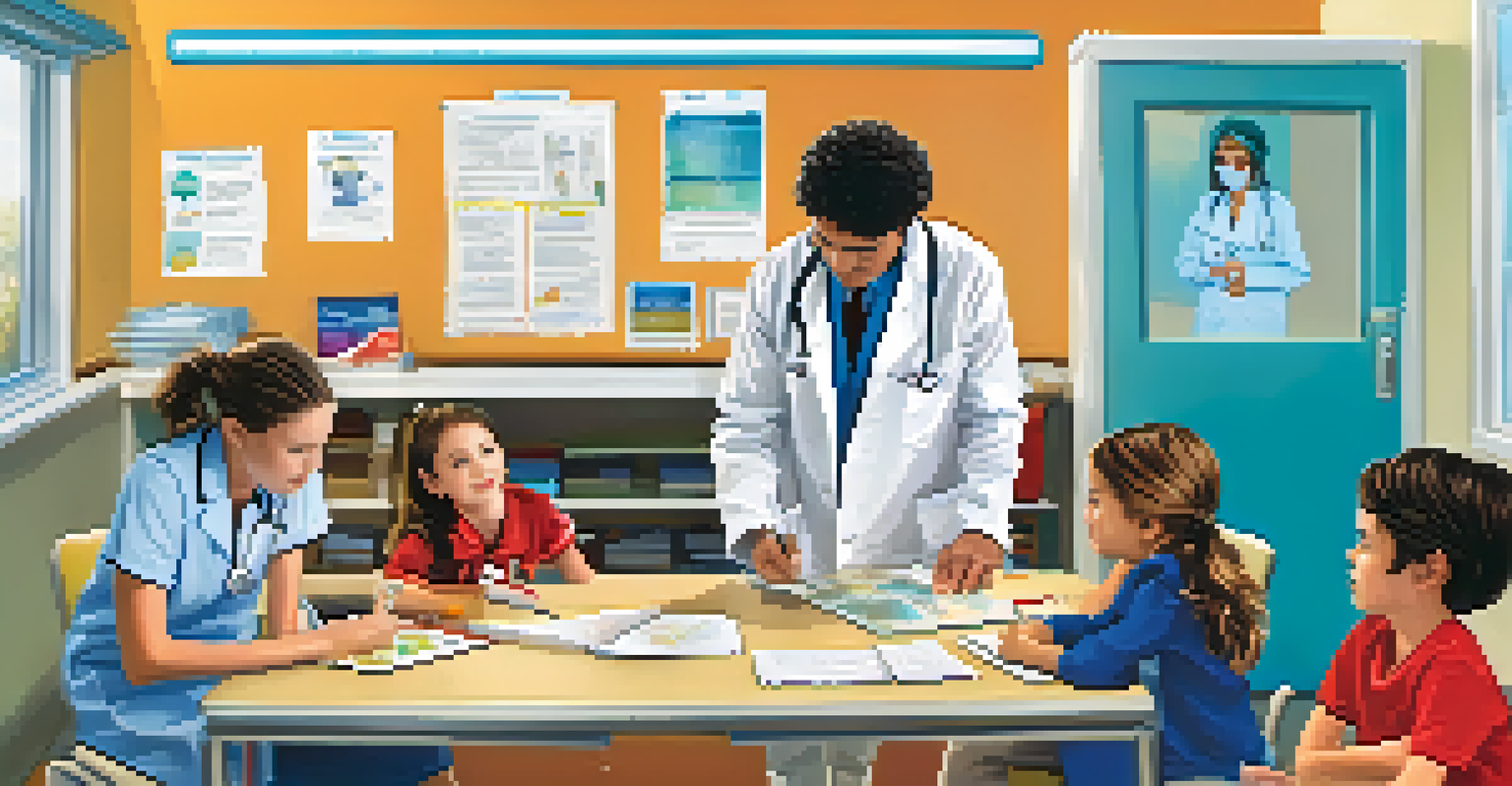Using Simulations in Project-Based Learning Activities

Understanding Project-Based Learning and Its Benefits
Project-Based Learning (PBL) is an educational approach that emphasizes real-world challenges. Students engage in projects that require critical thinking, creativity, and collaboration, preparing them for actual workplace scenarios. This method not only deepens understanding but also fosters a sense of ownership over their learning process.
Real learning comes about when the learners themselves take charge.
One of the main benefits of PBL is that it promotes engagement. When students work on meaningful projects, they are more likely to stay motivated and invested in their learning. Additionally, PBL encourages teamwork, helping students to develop essential interpersonal skills they will use throughout their lives.
Moreover, PBL offers a hands-on experience that traditional classroom settings often lack. By immersing themselves in practical tasks, learners can see the real-world applications of their studies, making the content more relatable and memorable.
What Are Simulations and Why Use Them?
Simulations are interactive models that replicate real-world processes or systems, allowing learners to experiment and make decisions in a safe environment. They can range from simple role-playing exercises to complex virtual environments that mimic intricate scenarios. Using simulations in education helps bridge the gap between theory and practice.

The beauty of simulations lies in their ability to engage students' senses, making learning more dynamic. Instead of passively absorbing information, learners actively participate, which can lead to deeper understanding and retention. It's akin to learning to ride a bike; you can read about it, but you truly learn by doing.
Benefits of Project-Based Learning
Project-Based Learning (PBL) enhances student engagement by allowing them to tackle real-world challenges through collaboration and hands-on experiences.
Additionally, simulations foster critical thinking and problem-solving skills. Students encounter challenges that require them to think on their feet and devise strategic solutions, mimicking the pressures and complexities they might face in the real world.
Integrating Simulations into PBL Activities
Integrating simulations into project-based learning can enhance the overall educational experience. To start, educators can design projects that incorporate simulation tools relevant to the subject matter. For instance, a business class might use a stock market simulation to teach economic principles, allowing students to apply what they learn in a practical context.
The best way to predict the future is to create it.
It's important to align simulations with learning objectives to ensure they add value to the PBL experience. This means selecting simulations that not only engage students but also reinforce the core concepts of the project. By doing so, educators can create a seamless transition between theory and application.
Moreover, involving students in the design of their simulations can boost engagement. When learners have a say in how they explore concepts, they become more invested in the outcomes, making the learning process even more effective.
Enhancing Collaboration Through Simulated Environments
Simulations naturally encourage collaboration, which is a key component of effective project-based learning. In a simulated environment, students often need to work together to solve problems, share ideas, and make decisions, mirroring real-world teamwork dynamics. This collaborative aspect prepares them for future work environments where cooperation is essential.
As students engage in simulations, they can take on different roles, allowing them to understand various perspectives within a project. For example, in a simulation of a healthcare scenario, one student might play the role of a doctor, while another takes on the role of a patient. This role-playing fosters empathy and enhances communication skills.
Role of Simulations in Education
Simulations replicate real-world scenarios, enabling students to actively participate and develop critical thinking and problem-solving skills.
Furthermore, collaboration in simulations can lead to richer discussions and innovative solutions. By bringing diverse viewpoints together, students can brainstorm ideas and strategies that they might not have considered individually, enhancing the overall learning experience.
Addressing Challenges with Simulations in PBL
While simulations can significantly enhance project-based learning, they are not without challenges. One common issue is ensuring that all students are equally engaged during the simulation. Some may dominate the activities while others take a backseat, which can hinder the collaborative learning process.
To mitigate this, educators can establish clear roles and responsibilities for each student within the simulation. By assigning specific tasks and encouraging active participation, teachers can ensure that every student has the opportunity to contribute. It's also helpful to set expectations for collaboration and communication ahead of time.
Another challenge can be the technology required for simulations. Not all schools have access to advanced simulation tools or platforms. Educators must be resourceful, finding free or low-cost alternatives that still provide a meaningful learning experience. Even simple role-playing exercises can serve as effective simulations.
Assessing Learning Outcomes from Simulations
Assessing learning outcomes from simulations can be a bit different from traditional assessments. Instead of relying solely on tests or quizzes, educators can evaluate students through their participation in the simulation, group discussions, and the final project outcomes. This holistic approach provides a clearer picture of a student's understanding and skills.
Additionally, incorporating self-assessment and peer feedback can deepen the learning experience. After completing a simulation, students can reflect on their performance and the contributions of their peers, fostering a growth mindset. This practice empowers learners to take ownership of their progress and identify areas for improvement.
Assessing Learning in Simulations
Evaluating outcomes from simulations requires a holistic approach, incorporating participation, peer feedback, and structured rubrics for comprehensive assessment.
Lastly, educators can use rubrics to assess specific skills demonstrated during the simulation. This structured evaluation not only provides clear expectations for students but also allows for consistent assessment across different groups and projects.
Future of Simulations in Education
The future of simulations in education is bright, with advancements in technology paving the way for more immersive and engaging experiences. Virtual reality (VR) and augmented reality (AR) are becoming increasingly accessible, allowing teachers to create more realistic simulations that can transport students into different scenarios. Imagine learning about ancient civilizations by virtually walking through their streets!
As educational institutions continue to embrace technology, simulations will likely become a standard component of project-based learning. This shift will encourage educators to continually innovate their teaching methods, helping students to stay engaged and motivated. It is essential that educators remain adaptable to these changes and explore new tools and techniques.

Ultimately, the integration of simulations in project-based learning can transform the educational landscape, making learning more interactive and relevant. By equipping students with practical skills and experiences, educators prepare them for success in an ever-evolving world.